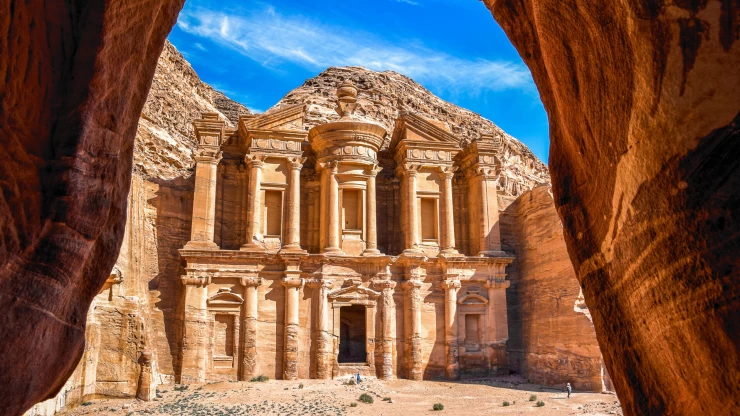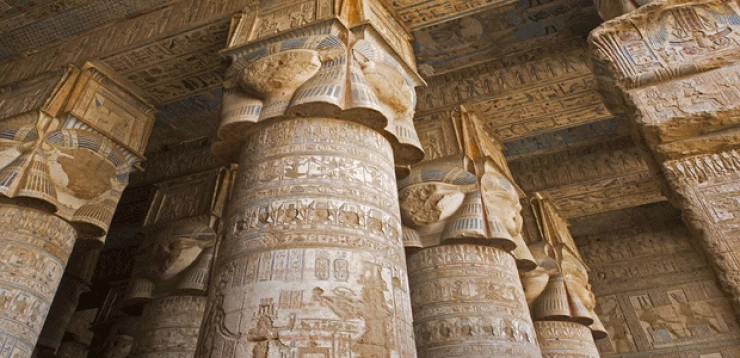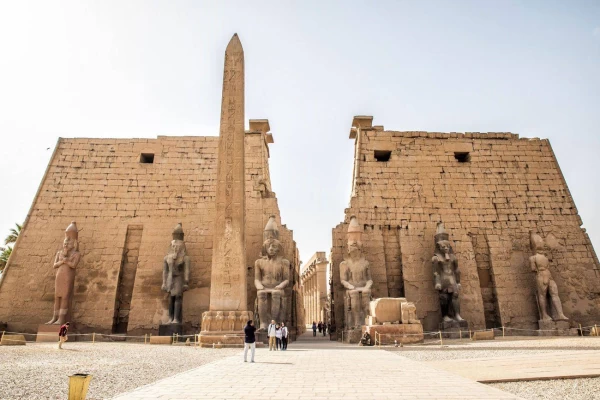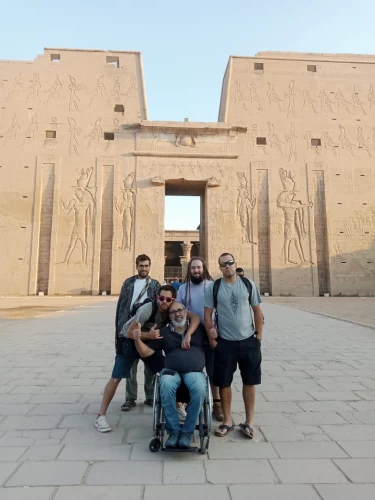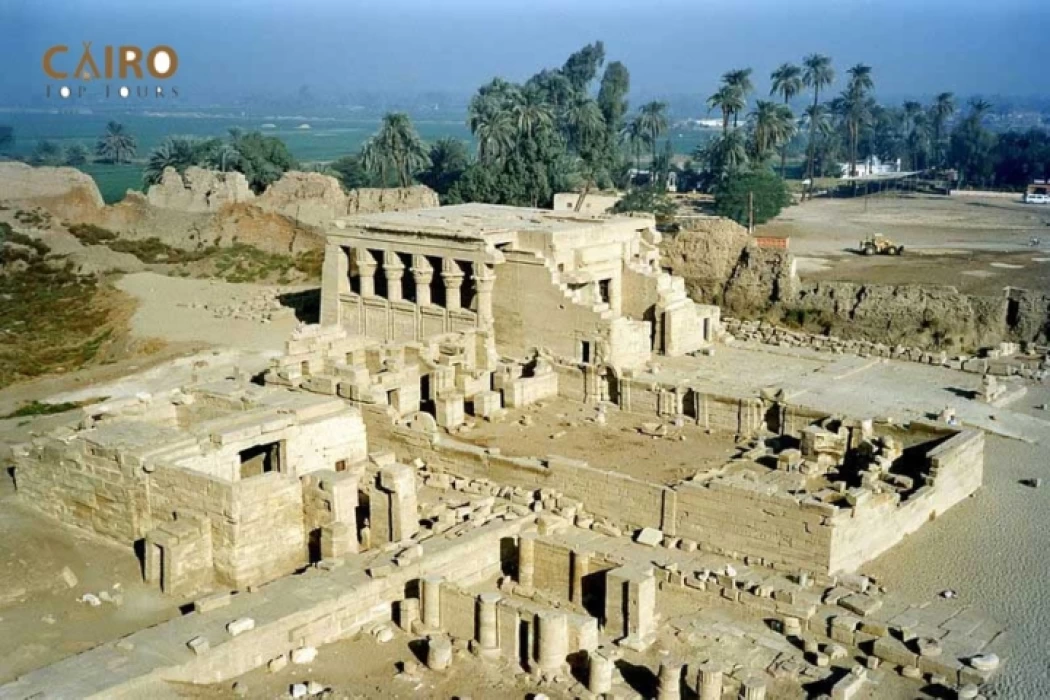
Temple of Dendera
Uncover the Enigmatic Temple of Dendera: Viewing the Spiritual Aspects of the Civilization of Ancient Egypt
Nestled on the west side of the Nile just outside the contemporary city of Qena lies the Temple of Dendera, which graces its visitors with an insight into the deep-seated religious beliefs and architectural prowess of the ancient Egyptians. Dendra is famous because of its incredibly well-preserved sculptures, images of the sky, and puzzling signs of the zodiac. History buffs, spiritual pilgrims, and inquisitive tourists, for example, make it a popular destination. The temple symbolizes the rich and complex beliefs, artistic skills, and astronomical knowledge that ancient Egyptians possessed, and it is therefore attractive to all who love this ancient civilization.
A Temple Dedicated to Hathor, Goddess of Love and Joy
The Dendera Temple complex is dedicated to numerous forms of the most beloved Egyptian goddess, Hathor, who is the goddess of love, music, joy, and femininity. Often depicted as a woman adorned with cow-like ears, Hathor was viewed as a deity who made the lives of the Egyptians harmonious and beautiful. Even today, the temple dedicated to Hathor is a subject of veneration, festivities, and adoration since priests and priestesses used to carry out activities to praise the goddess. When one walks inside the temple even now, there is a palpable appreciation of the goddess amongst the walls and columns that are devoted to the goddess.
Architectural Marvel and Timeless Beauty
The Temple of Dendera, built in the time of the Greco-Roman period, is unapologetically an engineering and architectural idol, with the structure in place more or less in its original glory. The most interesting part of this temple is its hypostyle hall, which has 24 huge columns all having capitals shaped like the head of soothing, smiling Hathor. The great grand scale of the hall and the details of the embossing take one back to a period in time where every form, every sign, and every glyph was a fragment of the narrative of Hathor.
Star-strewn and zodiac-clad ceilings within the structure prove that the ancient Egyptians possessed advanced knowledge of astronomy. One of the best-known reliefs of the temple—the zodiac of Denderah—is a representation of a celestial sphere containing pictures of the respective stars of the given signs. Such illustrations present fascinating evidence of Egyptian cosmology and their beliefs as to the significance of heaven and how religion is interlinked with astronomy in the history of Egypt.
The Mystical Dendera Light
Inside the Temple of Dendera, there is a very interesting yet controversial structure, which is referred to as the “Dendera Light.” This relief, located in one of the temple’s vaults, seems to show a lotus flower, in its interior there is a round object that resembles a light bulb or filament, leading several to theorize that the ancient Egyptians were familiar with electricity. This theory, however, is rejected by the majority of archaeological scholars, who rather perceive this as a simple religious emblem than the remains of old civilizations’ gadgets. This Dendera Light is, however, a pleasant part of the temple and raises interest and amazement among the visitors who happen to see it.
The Sacred Sanctuary and the Birth House
Centrally positioned in the temple is the sanctum, which contains the idol of Hathor. This interior sanctum was the center of all the activities, and it was reserved exclusively for priests and those performing the sacred rites. Another particular building on the ground is the "mammisi," literally meaning Birth House, where the god Horus, son of Hathor, was said to have been born. This structure, decorated with colorful reliefs depicting the birth and life of Horus, exemplifies the close relationship of Hathor with other gods and the reason why this temple was of great significance in Egypt.
Visiting the Temple of Dendera Today
The Dendera Temple complex is one of the best-kept temples in Egyptian history. It is much easier to visit as compared to other busy temples such as Luxor and Karnak. It is because of the smaller number of people attending the temple, and so visitors get the opportunity to appreciate the splendor of the temple in detail such as the intricate carving and the art of ancient Egyptians.
The Temple of Dendera is poetically beautiful in every aspect. Be it the map of stars or the runs of goddesses or figures drawn in captivating fonts, the cultural and spiritual know-how of the ancient Egyptians gushes out, pulsating with life. The Temple of Dendera, regardless of whether it is architecture, myths sculpted in stone, or the spirituality of ancient Egyptian culture and history, guarantees to take you on a ride worth every distance and time value.
Dendera Temple Complex
Dendera Temple was constructed in Greco-Roman temple shape, and nowadays the modern town is built on the ancient site of Tentyra, which means a Holy Pillar and was known by that name during the Greek time.
Scholars said that this name may be associated with the Greek Aphrodite, who was the goddess of beauty in Greek civilization.
Temple of Hathor at Dendera
The temple was originally built by Ptolemy XII and was nearly finished by Queen Cleopatra VII.
Cleopatra VII The Last Petolmy Kings
Hathor was the goddess of joy and love. Each year she was transported by boat to Edfu to be reunited with the god Horus. The celebration of Dendera followed, with which the divine union was celebrated. Every first day of the year, the statue of Hathor was carried along the magnificent staircase west of the temple to the open kiosk on the roof to be born again by the sun.
Dendera Zodiac
There’s a necropolis that comprises tombs from the Early Dynastic Period, and the complex itself consists of:
- Hathor temple (the main temple)
- Temple of the Birth of Isis, Goddess of Magic in Ancient Egypt religion
- Sacred Lake
- Sanatorium
- Mammisi of Nectanebo II, the third and last king of the 30th dynasty
- Christian Basilica
- Roman mammisi
- A Barque shrine
- Gateways of Domitian and Trajan
- The Roman Kiosk
The commanding building in the complex is the Temple of Hathor. This temple has been changed on the recent site, but it started as far back as the Middle Kingdom and stood up until the time of the Roman Emperor Trajan. The existing structure began construction in the late Ptolemaic period, and the hypostyle hall was built in the Roman period under Tiberius.
You can book our Tour to Dendera and Abydos from Luxor or an Overnight Tour to Abydos, Dendera, and Luxor from Cairo, or you can browse our variety of tours in Egypt.
"Dandara" is the Arabic name of the ancient Egyptian city "Eunt." It is a masterpiece of architecture, a unique example of the arts, and a comprehensive record of Egyptian religious thought. The temple is distinguished by its vast surface area and drawings that preserve its features and the tales of the gods "Hathor," the god of love and beauty. The temple also still holds many secrets after the development and restoration work, which included the Great Hall of Columns, the Hall of Illumination, and the development of exterior lighting systems.
There is a very special place called The Great Hypostyle Hall where you can go and see and feel how amazing ancient Egypt was.







